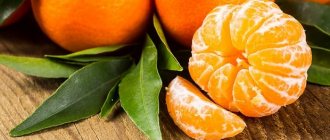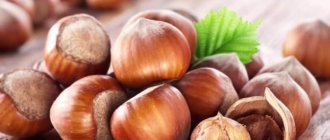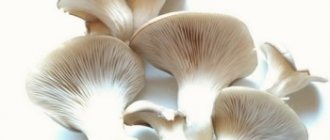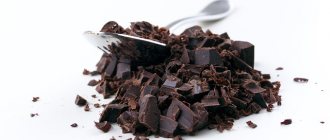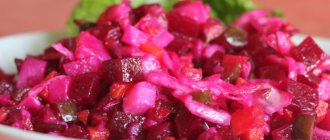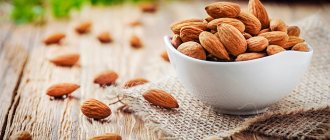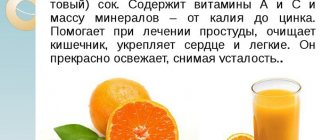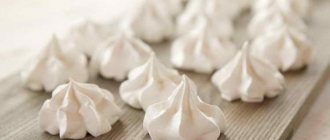The taste of Georgian cheeses will not leave indifferent either the sophisticated gourmet or the average person. The absolute leader (in terms of sales rates and popularity among the population) is Suluguni. It is best to buy cheese at the market, not in a supermarket, in order to feel the real Georgian spirit, and not the industrial scale of the cheese factory. Ideally, the cheese should be prepared the day before: this can be easily determined by the color of the head (the lighter, the fresher).
Cheese is eaten as an appetizer, main course, heat-treated, fried and even pickled. What really lies behind the familiar taste and is it safe to diversify your diet with cheese?
General characteristics of the product
Suluguni is one of the varieties of traditional brine Georgian cheese. Geographically, the Suluguni belong to the Samegrelo region. The cheese has a bright fermented milk taste free of impurities, a moderately salty taste and aroma, and a dense structure that flakes but retains the elasticity of its shape. The original recipe allows for a small amount of voids and “eyes” that form under the influence of air. Only voids of irregular shape are allowed. The color palette of the original Suluguni varies from pure white to muted yellow. The color should be uniform and evenly cover the entire surface of the cheese [1].
Content:
- General characteristics of the product
- How is suluguni made?
- Chemical composition of the finished product
- Useful properties of the ingredient
- Use of the ingredient in cooking
- Possible harm from consuming the product
- How to choose the right product
Industrial production of suluguni is regulated by GOST of a particular country. Pay attention to the country/company of manufacture and check for confirmation of compliance with government standards. This way you will protect yourself from counterfeiting, low-quality goods and unpleasant consequences.
Features of etymological origin
The name of the cheese is directly related to its historical homeland - the region of Samegrelo. The primary name of the cheese in the Mingrelian language is “selegin”. The word is considered compound and is formed from two parts. სელე (sele) – “knead”, “knead”, გინ (gin) – cattle (a reference to the main component of traditional cheese – cow or buffalo milk).
There is another version of the etymological origin of the word. It is believed that the word could have come from the Digor dialect of the Ossetian language, in which the word “sulugun” is used to refer to whey. According to Doctor of Philological Sciences T. A. Guriev, the prefix “gun” indicates a unique affiliation and dependence. In this case, “suluguni” means made/created from whey.
The third version of Georgian philologists points to the connection between the words “suli” (soul) and “guli” (heart). A similar poetic version has taken root in folk culture, Georgian poetry and prose, but is poorly connected with the real origin of the word [1].
Harm of Suluguni cheese and contraindications
Doctors and nutritionists often warn about contraindications of suluguni, which can be harmful to health. They appear in the following cases:
- problems with the digestive system;
- lactose intolerance;
- diseases of the urinary system;
- renal failure;
- high blood pressure;
- allergic reactions to any component contained in the composition.
Despite the huge range of beneficial properties, the harm of cheese is also significant, especially when used in excessive quantities or if contraindications are not carefully studied.
Attention! Abuse of suluguni can provoke the formation of edema and cause fluid retention in the body.
How is suluguni made?
The main ingredient for cheese is pasteurized cow or buffalo milk (a mixture of the first and second types in equal proportions is allowed). The acidity of mature cow's milk is 20-21°T (Turner degree is a unit of measurement for the acidity level of dairy products), and when mixed with buffalo it reaches 22-25°T. In the traditional format, the cheese is made from milk and a natural rennet starter. Abomasum is part of the stomach of cattle, the so-called glandular stomach. The traditional option involves going through all the cooking processes manually, without the help of any improvised means.
In modern realities, when cheese production must be calculated down to seconds, traditional methods have been replaced by innovative and technological ones. Calcium chloride and a starter culture based on special bacteria (consists of strains of flavor-forming and lactic acid streptococci) are added to pasteurized milk. The resulting mixture is heated to a temperature of 35°C, then pepsin (or rennet starter) is introduced to allow the milk to coagulate. After initial processing, large clumps of cheese mass are obtained, which are divided into small cubes of 6-10 millimeters. The cheese is allowed to “rest” for 5-10 minutes, after which it is dried (10-20 minutes) and the next stage of processing begins.
The cheese mass is exposed to high temperatures a second time. This time the product is heated to 34-37°C for 15 minutes. After this, the cheddarization process occurs.
Cheddarization is the process of changing the cheese mass. The product is exposed to lactic acid until it obtains a fibrous layered structure and a dense elastic consistency. Small cheese clots stick together into a single layer and, as a result of increased lactic acid process, turn into the cheese that we see on grocery shelves.
After cheddarization, the suluguni is melted, about 80% of the whey is removed, a single layer is re-formed and pressed. The pressed mass is left at a temperature of 28-32°C. Repeated cheddarization occurs, and then ripening of the finished cheese occurs. The average ripening time for suluguni is 3 hours [1].
After lengthy manipulations, the cheese is squeezed out of moisture, given the required shape (braid, layer, slices, whole piece), packaged in a container filled with acidic whey brine and left for several hours. Some cheeses are smoked, fried, re-boiled, or marinated in special brines/spices to enhance the flavor. The finished product is vacuum packed and sent to distribution points.
Chemical composition of the finished product
Energy value of suluguni
| Name | Concentration of substance in 100 g of product, g |
| Squirrels | 25 g |
| Fats | 21.4 g |
| Carbohydrates | 0 g |
| Alimentary fiber | 0 g |
| Water | 51.9 g |
| Calorie content | 285.7 kcal [2] |
Cheese composition
| Name | Substance content per 100 g of product, mg |
| Vitamins | |
| Retinol (A) | 0,12 |
| Beta-carotene (A) | 0,06 |
| Thiamine (B1) | 0,07 |
| Riboflavin (B2) | 0,5 |
| Niacin (B3) | 0,4 |
| Ascorbic acid (C) | 0,69 |
| Calciferol (D) | 0,0715 |
| Tocopherol (E) | 0,3 |
| Nicotinic acid (PP) | 5,5 [3] |
| Microelements | |
| Potassium (K) | 100 |
| Calcium (Ca) | 650 |
| Sodium (Na) | 1050 |
| Sulfur (S) | 205 |
| Phosphorus (P) | 420 [3] |
| Macronutrients | |
| Iron (Fe) | 0,6 |
Useful properties of the ingredient
Due to the high concentration of calcium (Ca) and phosphorus (P), cheese helps strengthen the skeletal system and prevents the development of pathologies of the musculoskeletal system. Eating cheese for a long time creates a certain cumulative effect:
- vascular walls are strengthened;
- blood circulation improves;
- metabolic processes are accelerated and digestion is normalized;
- the skin is cleansed, acne and allergic rashes are minimized [3].
Moreover, suluguni contains a high concentration of salt. It is an essential nutrient made from a compound of sodium and chlorine (NaCl). The compound comes exclusively from the outside and cannot be synthesized by the human body. Chlorine is responsible for the normal functioning of digestion, as it is part of the blood, bile and gastric juice. Sodium maintains water, acid-base balance, promotes the formation of nerve impulses. The component is responsible for the supply of oxygen/fluid/nutrients to the cells and maintaining the tone of the muscle corset.
Lack of salt in the body leads to disturbances in the functioning of digestion, the heart and blood vessels, the development of depression and mental illness. But too much salt can cost a person his life; it’s not for nothing that the product is called “white death.” If you decide to give up salt as a seasoning, then cheese will be a real salvation for maintaining salt balance [4].
A few slices of suluguni will replenish the required amount of salt and cope with the feeling of hunger for a long time.
The benefits of cheese
- A good ratio of proteins, fats and carbohydrates with a fairly low calorie content of the product.
- A healthy and tasty source of pure protein, necessary for the proper growth and development of the body.
- Easily digestible calcium and phosphorus - suluguni half covers the human body's need for these resources.
- Can completely replace animal protein.
- Normalization of metabolism.
- Strengthening the immune system.
- Maintaining normal hormonal balance.
- Favorable effect on the circulatory system.
- Helps strengthen the musculoskeletal system.
- Helps promote rapid growth of nails and hair.
- Prevents aging, helps avoid the appearance of wrinkles at an early age.
Use of the ingredient in cooking
Culinary experts call suluguni a universal cheese. It goes well with both vegetables or fruits and meat/fish ingredients. Suluguni creates the best flavor combinations with:
- radishes;
- olives;
- cucumbers;
- beans;
- red onion;
- lean meats;
- fish;
- mustard;
- sour cream;
- balsamic vinegar.
Cheese is served in all possible forms: raw, smoked, baked, fried. By changing the type of heat treatment of cheese, you can radically change the flavor palette of the entire dish. The most popular dish with suluguni is khachapuri. This is a traditional Georgian flatbread with cheese filling. The product can also be added to salads, appetizers, and served in addition to first and second courses.
Possible harm from consuming the product
Cheese is the most fatty and salty food product. A person rarely confines himself to a small piece of cheese, and large amounts of consuming suluguni are fraught with serious consequences. Why can't we stop eating cheese? The answer to this question was found by researchers at Welcome Research Laboratories Research Triangle Park in the 80s [5]. A special chemical compound was discovered in the dairy product, the structure of which is extremely reminiscent of morphine. This element is secreted in the cow's liver and, accordingly, passes to milk/its derivatives. The component leads to overeating, which can lead to:
- bowel dysfunction;
- obesity;
- violation of eating habits;
- increased cholesterol levels;
- development of pathologies of the heart and blood vessels.
Several slices of suluguni contain about 50-70% of the daily requirement of an adult. To avoid overeating, you need to correctly calculate your BJU, drink more filtered water (it suppresses hunger/stabilizes the body’s functionality) and eat more fresh vegetables/fruits.
Cheese production also raises many questions. Many manufacturers care more about the tightness of their own wallet than about the health of the consumer. Pus, antibiotics, and hormones are found in dairy products, which are fed to cows in order to get more milk in a short time.
The human body absorbs this entire chemical set along with food.
This is fraught with:
- osteoporosis;
- serious hormonal imbalance;
- cancer;
- malfunction of the gastrointestinal tract;
- imbalance of microflora.
Best materials of the month
- Coronaviruses: SARS-CoV-2 (COVID-19)
- Antibiotics for the prevention and treatment of COVID-19: how effective are they?
- The most common "office" diseases
- Does vodka kill coronavirus?
- How to stay alive on our roads?
But there is no need to completely abandon your beloved Suluguni. As you know, “the forbidden fruit is sweet” and you will definitely want to break the fragile prohibition. Allow yourself a cheese meal 1-2 times a week. Choose a responsible manufacturer and monitor the quality of the products you consume. If your diet is rational and balanced 6 out of 7 days a week, then the pleasant joy of a slice of cheese will definitely not harm your body.
Is suluguni good for weight loss?
This delicacy should be present in the diet, since its benefits, unlike other cheeses, are several times greater. This is due to the fact that it has the lowest fat content. When losing weight, to maintain immunity and saturate the body with vital substances, it is important to eat healthy and natural food that does not contain additional sugar and various flavoring additives. Suluguni is considered an excellent snack, and can also be used before bed, since it does not cause heaviness in the stomach and breaks down quickly. Cheese does not lead to the formation of excess weight and can speed up metabolism, which eliminates the gain of extra pounds.
How to choose the right product
Label
The places where suluguni is sold are the most diverse. Cheese is sold both in local markets and in chain supermarkets. Choosing a quality product in a store is much easier - you have a certified manufacturer in front of you, and all the necessary information is placed on the label. What to pay attention to:
- manufacturing company and its details;
- implementation period;
- compound;
- calorie content.
Moreover, the buyer can look at the vacuum packaging of cheese for at least several hours for flaws or foreign objects. At the market, all the necessary information should be obtained from the seller. Ideally, it should have a certificate that confirms the quality of the product. If there are no such documents, say goodbye to the seller and go in search of a more responsible manufacturer. At the market, give free rein to all your receptors: examine the cheese, smell it, taste it [6].
Aged suluguni is characterized by moderate bitterness, so do not be afraid of the additional taste sensations, but try to enjoy them and feel each new shade.
Appearance
The shade can vary from perfect white to yellowish (depending on the type of milk, fat content, and the presence of additional ingredients). Damage to the surface of the cheese is unacceptable (only small uneven bulges that have formed under the influence of air are possible). The surface should be moist and slimy by coating with acid whey.
Calorie content of suluguni per 100 grams
This parameter directly depends on what technology was used for cooking and smoking. The homemade product contains about 283 kcal.
Fried is not only the most harmful, but also the most high-calorie, with high fat content. The above volume accounts for 376 kcal. Finally, the calorie content per 100 grams of smoked suluguni cheese, sold in the store, contains 225 kilocalories.
